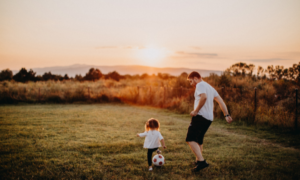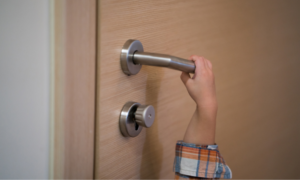
Developmental milestones by age 3
Developmental milestones or developmental indicators are a set of behavioural or functional skills thresholds that map the course of your child’s development. These behaviours are categorised into five domains – communication and language, physical and motor, social and emotional, adaptive and cognitive. Parents must keep in mind that India has great linguistic diversity, and children may have to be taught the same words in different languages. By age three, a child normally attains the following skills in each domain.
Developmental milestones by age 3 – Language Milestones
- Is able to identify various body parts
- Has ‘conversation’ with self or toys like dolls
- Starts asking, “what is that?” or “where is my?”
- Uses two-word phrases such as “no want”.
- Is able to form plurals by adding “s”; e.g. book, books
- Has a 450-word vocabulary
- Gives the first name, holds up fingers to tell the age
- Is able to combine nouns and verbs, e.g. “papa go”
- Starts understanding simple time concepts like “last night”, “tomorrow”
- Refers to self as “me” or “I” rather than by name
- Likes to get adult attention, say words like “watch me”
- Likes repetitions, hears the same story every day
- Sometimes say “no” when they mean to say “yes”
- Tries to talk to other children or adults
- Develops problem-solving capacity by talking instead of hitting or crying
- Answers “where” questions
- Is able to name familiar pictures and things
- Starts using short sentences like “I want more” or “me want milk”
- Matches three to four colours, knows the difference between big and small
-
- Repetition, say new words over and over
- Play games with instructions: “pick up the ball,” “Touch your nose”
- Take a trip and talk about what you see on the trip
- Ask simple questions and encourage them to think and answer
- Read bedtime stories as a routine
- Listen without distraction when your child speaks to you
- Describe the things that you are doing
- Make them deliver simple messages on your behalf , “Mommy needs you, sister”
- Have regular conversations with them
- Let them realise that you understand they are saying by nodding your head, answering or by smiling
- Complete their sentences. For e.g. If they say, “more juice,” you say, “Adi wants more juice.”
Developmental milestones by age 3 – Motor Skills Milestones
Gross Motor
- Is able to run forward fairly well
- Starts jumping with two feet together
- Stands on one foot with assistance
- Tries to walk in a tiptoe position
- Is able to kick a ball forward

Fine Motor
- Is able to strings large beads
- Turn a single page in a book
- Snips with the use of a scissor
- Grips start correcting, is able to hold a crayon with thumb and fingers (not fist)
- Uses one hand consistently in most activities
- Imitates circular, vertical, horizontal strokes
- Paints with some wrist action; make dots, lines, circular strokes
- Rolls, pounds, squeezes and pulls the clay
Developmental milestones by age 3 – Social Skills Milestones
- Is not afraid to play near other children
- Watches other children; sometimes joins them briefly
- Defends own possessions
- Begins to play the game of “house”
- Symbolically uses objects, self in play
- Participates in a simple group activity
- Knows gender identity
- Shows a wide range of emotions
- Shows empathy or some type of concern of someone in distress
Developmental milestones by age 3 – Adaptive Skills Milestones
- Uses spoon with little spilling
- Is able to open a door by turning the handle
- Takes off coat
- Puts on a coat with assistance
- Washes and dries hands with assistance

Developmental milestones by age 3 – Cognitive Skills Milestones
- Responds to simple directions
- Selects and looks at picture books, names pictured objects, and identifies several items within one picture
- Matches and uses associated objects meaningfully
- Stacks rings on a peg in order of size
- Plays make-believe with dolls, animals and people
- Recognises self in the mirror
- Says own name
- Can talk briefly about the activity they are doing
- Tries to imitate adult actions
- Has limited attention span; learning is through exploration and adult direction
- Is beginning to understand functional concepts of familiar objects and part/whole concepts